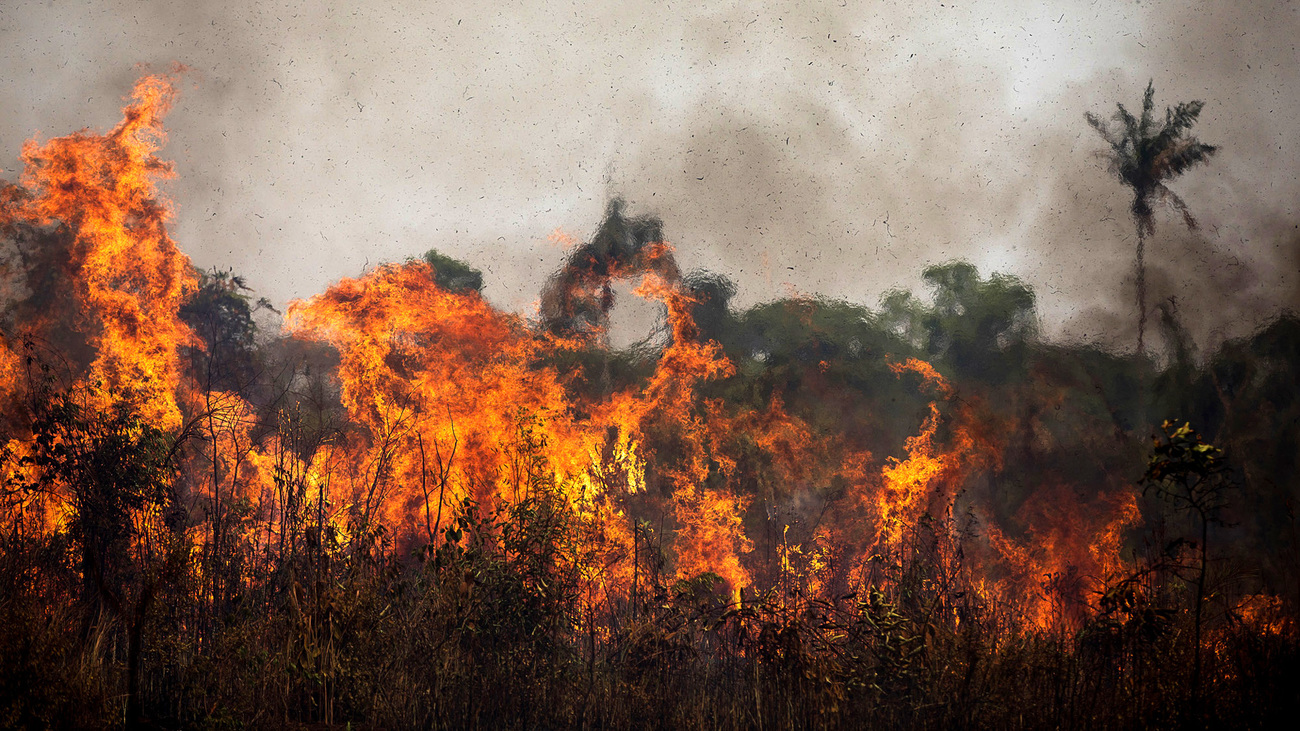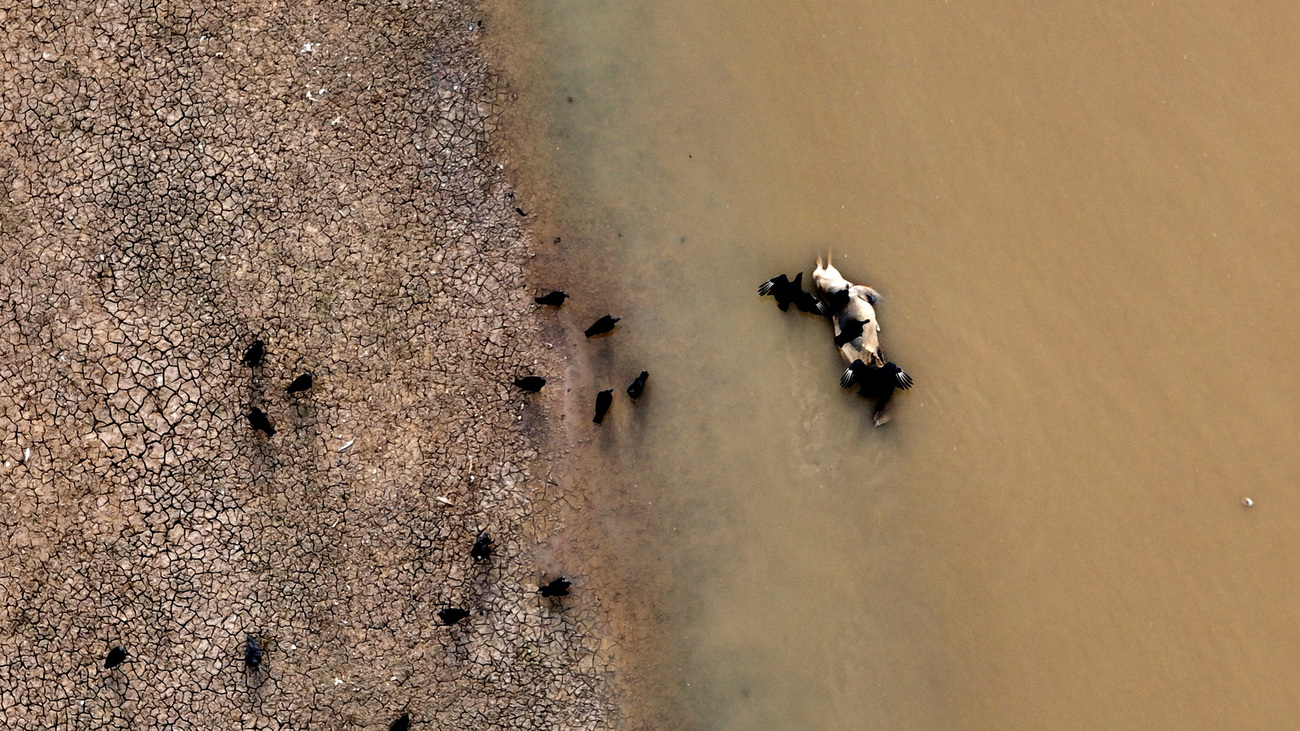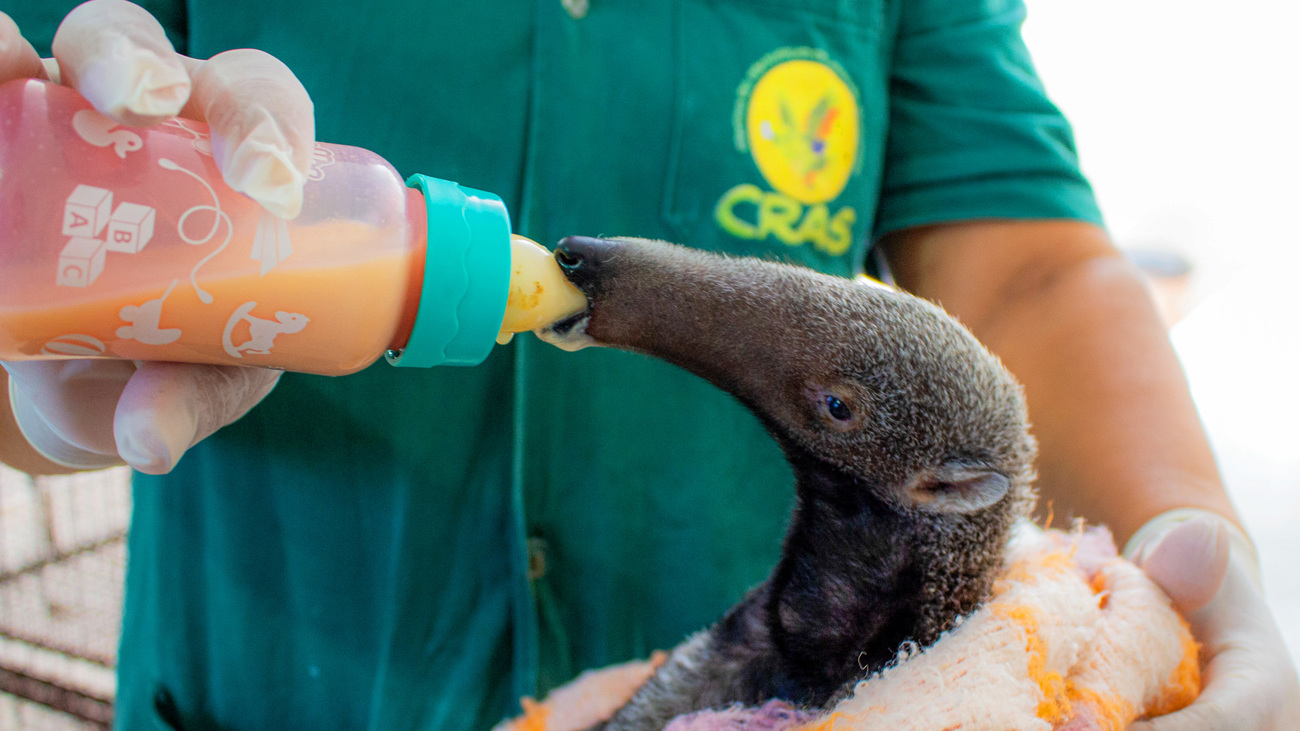Neil Greenwood
Brazil’s fires: A wake-up call to climate change and human destruction of nature
Brazil’s fires: A wake-up call to climate change and human destruction of nature
This year alone, more than 760,000 hectares of land have burned in the Amazon and 1.3 million hectares in the Pantanal region. Since fall 2023, devastating fires have wreaked havoc in the Amazon rainforest and Pantanal wetlands.
Home to more than half of the world’s animal and plant species, the Amazon—often called the lungs of the planet—has spent months choking on smoke. In September and October, the capital city of the State of Amazonas, Manaus, had some of the most polluted skies in the world.

The Pantanal’s annual fire season usually ends in October. But thanks to climate change-induced extreme fire weather, the fires have extended well into the normal rainy season.
As of June 2024, the destruction exceeded records by more than 70%. This June was the driest, hottest, and windiest June in the Brazilian Pantanal on record. If the global temperature persists at 1.2 degrees Celsius above pre-industrial levels, we can expect such conditions to occur every 35 years. Fire weather, which includes lengthy periods of dry air, high temperatures, and severe winds, is now 40% more intense and four to five times more probable. If global warming worsens, such conditions will become even more common.
Deadly extreme heat
Brazil is hitting other disturbing records, too. On 19 November, the country recorded its hottest temperature ever: 44.8 degrees Celsius (112.6 degrees Fahrenheit). From August 22 to 25, over 60 million people in Brazil experienced temperatures as high as 39 degrees Celsius (102 degrees Fahrenheit); this is seven degrees Celsius (45 degrees Fahrenheit) above the normal temperatures for this time of year.
Heatwaves alone are often enough to push animals into danger. They become lethargic, so they don’t eat, which affects their overall health and ability to flee wildfires. Heat and drought conditions also contribute to unusually low water levels and high temperatures in rivers and lakes, which tragically caused a mass die-off of endangered Amazon and Tucuxi river dolphins in Lake Tefé in October.
The problem with these extreme weather events is not only the heat, flames, and smoke but also their deadly knock-on effects. Habitat loss, polluted water sources, the death of prey or vegetation on which animals rely, and the human neighbourhoods to which they flee all threaten wildlife, even after they survive the initial disaster.
Most of the fires are not natural occurrences but are started by humans trying to clear land for livestock or crops. When those fires combine with the unpredictable weather patterns we’re seeing because of climate change—especially high heat, low rainfall, and strong winds—they engulf a tremendous amount of land so quickly that our most precious and vulnerable natural resources are left desolate.
Pollution resulting from the fires is also deadly for animals and people. On August 20, the concentration of cancer-causing microparticle PM2.5 reached levels 11 times higher than World Health Organization recommendations. People in the region have experienced an uptick in cases of asthma, pneumonia, and sinusitis. Poor air quality also impacts wildlife in similar ways.
We are reaching a tipping point where species will either find new—less hospitable—territories or become extinct, and ecosystems will collapse.

What we’ve learned from two orphaned anteaters
Although this year’s fires are horrific, they’re not completely unprecedented. In 2020, fires burned through 30% (approximately 4.5 million hectares) of the Pantanal, killing millions of animals. Brazil’s iconic giant anteaters were badly affected.
After the fires, we supported Tamandua Institute to establish the Orphans of Fire project and rescue six young anteaters whose mothers had died in the fires. The team has now rehabilitated and released two of those pups back into the wild with GPS harnesses so we can track them and learn more about the challenges they face.
Post-release monitoring (aka telemetry) is a regular practice IFAW performs on rehabilitated animals around the world, like elephants in Zambia and raptors in China. It’s critical to understand where these animals are going because, if those areas are higher risk, it can influence our work, our policies, and our solutions.
Our experience of releasing Tupã and Venus, two orphaned anteaters, shows exactly why this kind of monitoring is vital.
Tupã left the safety of his enclosure in 2021 as the youngest known giant anteater to be released back into the wild after being rehabilitated. He had been placed in a semi-enclosed environment so he could safely explore and leave when he felt ready. When he finally ventured out, it was with an armadillo friend.
In the three years since then, he has thrived in the wild.

Why working with communities is vital
The other released anteater, Venus, sadly became a stark reminder that we don’t release wildlife into pristine environments free from dangers; any animal we release still faces threats. Venus was doing incredibly well for a while, but then her GPS showed that she hadn’t moved for an unusually long time. She was found dead on a ranch.
We don’t think it was a malicious killing. Her body was intact, so she wasn’t killed for her hair, hide, or meat—although anteaters are sometimes hunted for their claws, for food, or so their skin can be turned into equestrian equipment.
We believe her death was a case of human–wildlife conflict. Giant anteaters are big animals with big claws. They generally avoid people and conflict, but they can look scary if they’re cornered. You can understand why someone might perceive them as a threat.
Venus is a symbol of the threats anteaters face on a day-to-day basis. Her death highlights why we need to educate people about what to do if you see an anteater and why they’re so important.
We are all part of an intricate system
All these problems are interconnected. Human–wildlife conflict is worsened by habitat loss. As more land is burned, turned from forest to savannah, or destroyed by the effects of climate change, more wildlife look for safety in heavily populated areas. That’s why it’s so important that IFAW prepares for disasters, educates communities, and advocates for governments to implement policies that protect habitats.
Often, the poorest communities are the ones living closest to nature and bordering protected areas. They are just trying to survive. IFAW believes these communities are integral and essential to conservation. We can’t fully protect the wildlife living around them unless we ask ourselves how we can help them via social empowerment.
Many people who live at a distance from wildlife have divorced themselves from being a species within the intricate ecosystem on which we depend for our survival. The pandemics we’ve recently experienced—and that will likely become more prevalent—are one example of our ecosystem’s decline. A healthy system mitigates disease.
Wildlife is a critical part of our ecosystem. Our habitats rely heavily on animals to engineer those environments, such as through seed dispersal. Plants don’t exist without animals, and vice versa—so we won’t exist without them either. Wild animals also play a crucial role in carbon sequestration, the capture and storage of carbon from the atmosphere, which mitigates climate change.
Even as humans harm the natural environments on which we depend, nature finds ways to limit the damage for itself and for us.
Wildlife rescue is a key part of the solution
If climate change was all that animals were trying to survive, the situation would be severe enough. But they face a multiple-pronged threat, and that’s why IFAW takes a multi-pronged approach to conservation.
As Venus the orphaned giant anteater proves, it doesn’t help to rescue wildlife if you don’t have a safe landscape to return them to. That’s why we engage communities and authorities to preserve landscapes.
We need government protocols and agreements to protect landscapes and mitigate climate change, but bureaucratic processes take time that some species don’t have left. In the meantime, we are losing animals. Our wildlife rescue teams are trying to limit the damage while the protocols and agreements are figured out.
Wildlife rescue will always be crucial, but it will be all the more crucial if we don’t wake up to the damage we are doing to wild animals’ homes—to our own home. We urgently need to protect our planet’s most vulnerable and precious ecosystems, and the creatures who live there. They are the ones, ultimately, who are working to protect us.
Related content
every problem has a solution, every solution needs support.
The problems we face are urgent, complicated, and resistant to change. Real solutions demand creativity, hard work, and involvement from people like you.